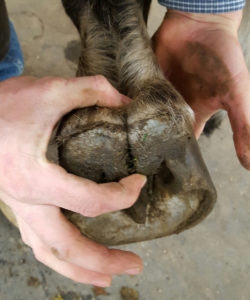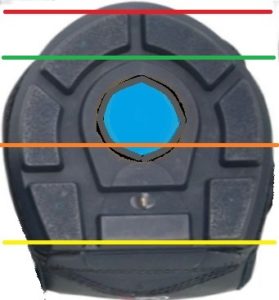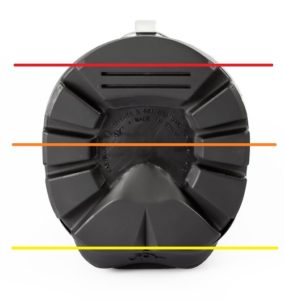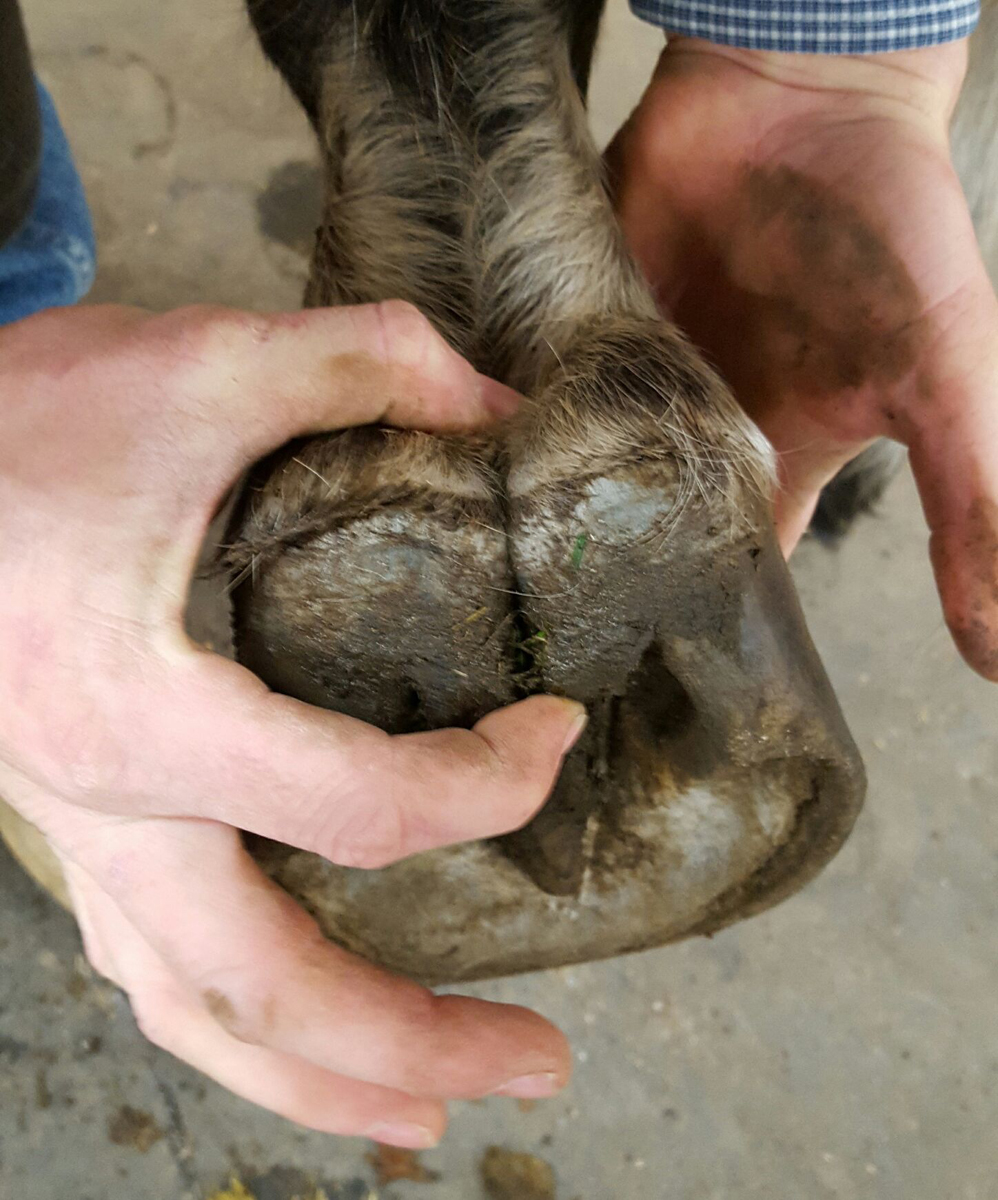Choosing the Best Protection for Your Horse
by Mark and Karen Plumlee
Perhaps no issue related to horse husbandry creates more dissension among friends than the subject of barefoot versus shod and the appropriate use of boots. At Mission Farrier School we focus on sound shoeing principles, sound barefoot trimming and the appropriate use of boots and glue-on shoes when needed. We cannot cover all of that in this short article, but here are some key points to consider.

Horses that can be successfully maintained barefoot have a couple things going for them. They are endowed with hard feet, thick healthy soles and robust frogs overlaying substantial, thick and fibrous digital cushions. Of course you can’t see the digital cushion as it lies internally between the frog and the bone column in the back half of the foot, but by placing your thumb in the depression made by the heel bulbs and your index finger in the cleft of the frog, you can get an approximate measurement. A horse with a good digital cushion will have a measurement greater than 2”. While you can encourage a more vibrant frog as the frog is always laying down tissue and exfoliating just like the sole, you cannot “grow” a digital cushion. It is what it is.
If your horse has soft feet, thin soles and a poor quality frog and/or digital cushion, you can still maintain him barefoot if you give careful consideration to his environment. If he lives in a soft pasture and you just do an occasional trail ride then the use of boots is great for providing protection for the sole and they may also provide stability to the back of the foot. Proper use, however, is critical.
First, boots must fit. This requires a fresh trim prior to measuring. All boot manufactures have a measuring chart to insure proper fit. It is important to note that hooves grow throughout the trimming cycle so what fits on day 1 may not fit 6 weeks later. If you wish to maintain your horse barefoot and use boots on an “as needed” basis it will be important to pay attention to your trimming cycle. Ideally, your horse should have a conservative trim every 4 weeks if the conformation of your horse’s feet can handle going barefoot.
Here in Western Washington we see all kinds of hooves and not all equine feet can maintain soundness when barefoot. While it is true that stimulation is good for the hoof, inflammation is never good. If you have a soft footed, thin soled horse you are walking a critically thin line between stimulation and inflammation. This is where the appropriate use of boots can be beneficial, but you must use common sense. If your horse is sore, use a good boot or have him well shod. If your horse is showing pain and tests positive to hoof testers through the anterior sole, then it is likely that the perimeter of the coffin bone is inflamed. Left in that situation, this can lead to a loss of vasculature and, ultimately, bone loss.
Sole protection is a common reason to use boots. However, boots also have their problems. Not all boots offer appropriate balance parameters as needed for healthy hoof mechanics. It is rare to find a boot that does not extend the pivot point for forward movement. Remember, the health of the entire lower limb is predicated on establishing and maintaining proper equilibrium around the coffin joint. This allows the limb to move forward without abnormal tension on the 2 flexor tendons which run down the back of the leg. To get an idea of what we are talking about, picture jogging in a good running shoe vs. jogging in a swim fin. This is an extreme example. However, it can be detrimental to the entire lower limb when breakover is allowed to migrate forward. Inappropriate balance parameters are a leading cause of tendon, ligament and joint ailments including navicular disease.

As seen here, boots rarely allow for the positioning of proper breakover. The red line is where breakover is on this boot, the green line is where it should be, if positioned correctly on the foot. The orange line is the center of articulation of the coffin joint, and the yellow line is posterior support. Keep in mind that in our “model” hoof, the distance from center to posterior support should be “more” and from center to breakover should be “less”.

This boot is just the opposite. Many boot manufactures are now attempting to design boots with at least a minimal amount of breakover built into them like this better boot. While that is certainly on the right track, most still fall short of ideal balance parameters.
Conclusion:
Pros: Good boots provide protection for barefoot horses when needed; can be a great temporary support for sore horses; and are good shock absorbers for horses with poor digital cushions.
Cons: Horses cannot live in boots full time. Boots generally extend the pivot point for forward movement which unbalances the equilibrium around the coffin joint, leading to poor hoof mechanics.
In researching boots for this article, most of the pictures we found had balance parameters that, in our opinion, were unfavorable. Choose your boots with care.

Mark Plumlee has been shoeing horses for over 40 years. He is certified through three national farrier associations and has been a pioneer in the advancement of farrier education. He and his wife, Karen, have educated over 500 students from across the United States and 10 foreign countries. The Plumlees own and operate Mission Farrier School in Snohomish, WA and also compete in cowboy mounted shooting. For more information visit MissionFarrierSchool.com and find them on Facebook.

Mark Plumlee is a Certified Journeyman Farrier through the American Farriers Association, a Registered Journeyman Farrier through the Guild of Professional Farriers, and a Certified Barefoot Trimmer, Certified Farrier Practitioner and Certified Lameness Specialist through the Equine Lameness Prevention Organization. These diverse certifications speak to Mark’s commitment to the horse. Mark has published 6 educational DVDs and has been a pioneer in the advancement of farrier education for over 30 years. Mark, with his wife Karen own and operate Mission Farrier School and an Equine layup facility in Snohomish, Washington. They have graduated students from across the United States and 10 foreign countries. For more information visit http://www.missionfarrierschool.com and “Like” them on https://www.facebook.com/MissionFarrierSchool

